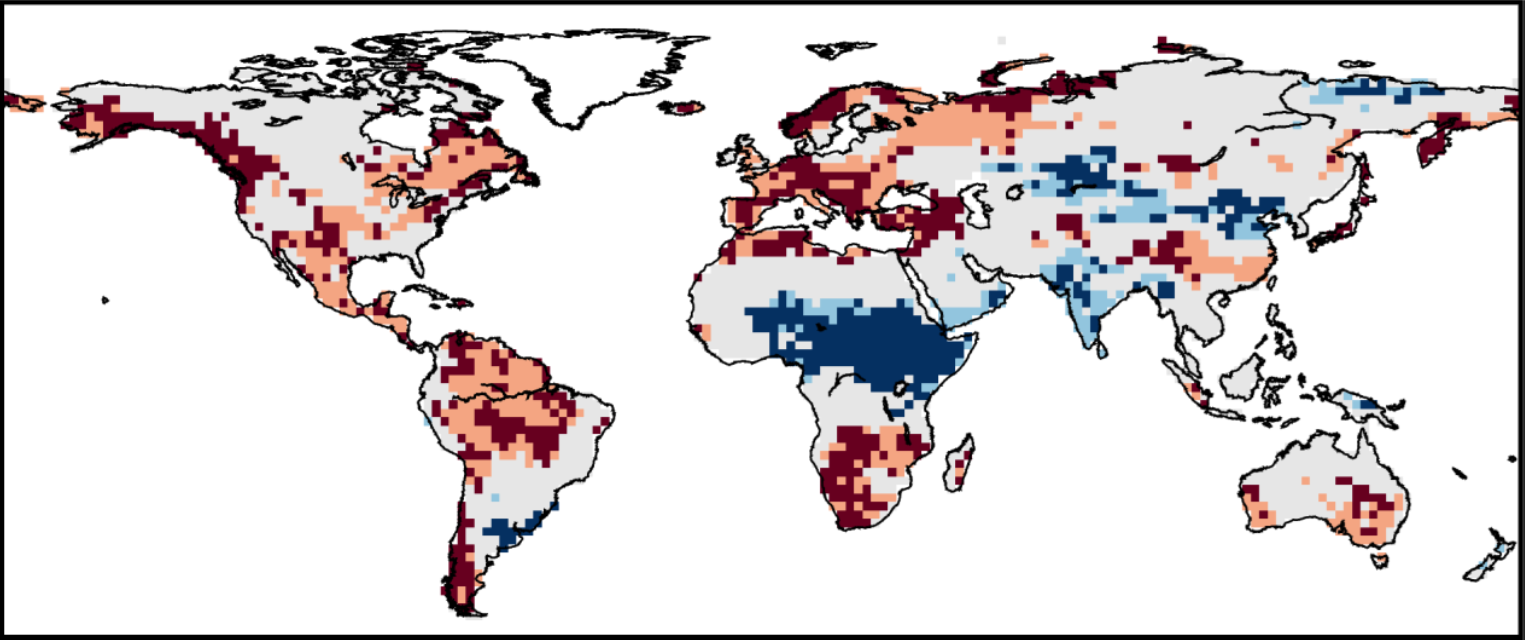Jensen et al. (2024), including DETECT PIs Stephanie Fiedler and Jürgen Kusche, evaluate trends in terrestrial water storage over 1950–2100 in CMIP6 climate models against a new global reanalysis from assimilating GRACE and GRACE-FO satellite observations into a hydrological model. To account for the different timescales of model simulation and satellite data availability, they identified regions in which the influence of interannual variability is small and observed trends may be considered as representative for longer periods.
The study revealed distinct biases in drying and wetting trends in the CMIP6 models for several world regions. For example, it identified high model consensus for drying in the Amazon, however disagreeing with the observed wetting. In contrast, other regions show a high consensus of models and observations, suggesting qualitatively correctly simulated trends e.g. for the Mediterranean and parts of Central Africa, two hotspots of climate change which are relevant in DETECT. A lesson is thus that a high model agreement, even across various different Earth system models, might still falsely indicate a robust trend in water storage if it is not assessed against available observations. This also underscores the importance of maintaining an adequate observational capacity for measuring water storage change for climate change assessments.

Drying (red) and wetting (blue): Regions of high consensus across 17 CMIP6 models; dark means agreement with GRACE/-FO, light means disagreement with GRACE/-FO in sign of trend.

